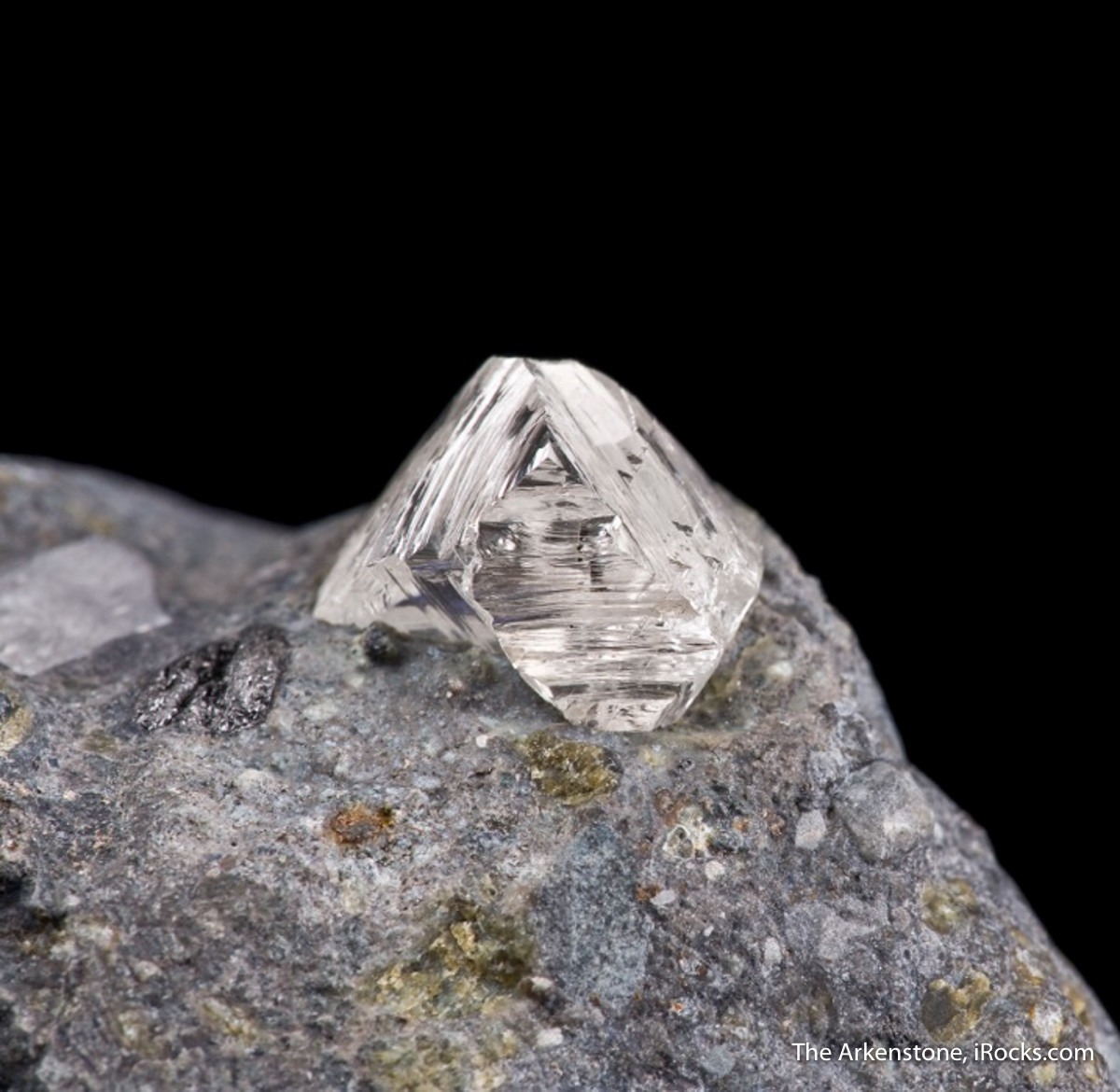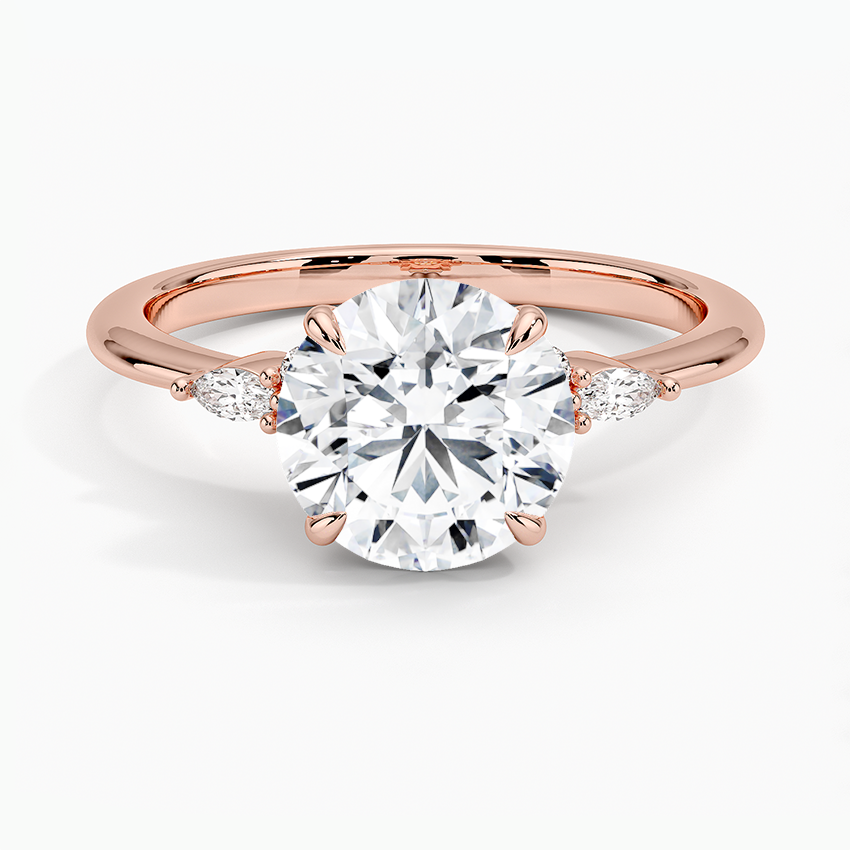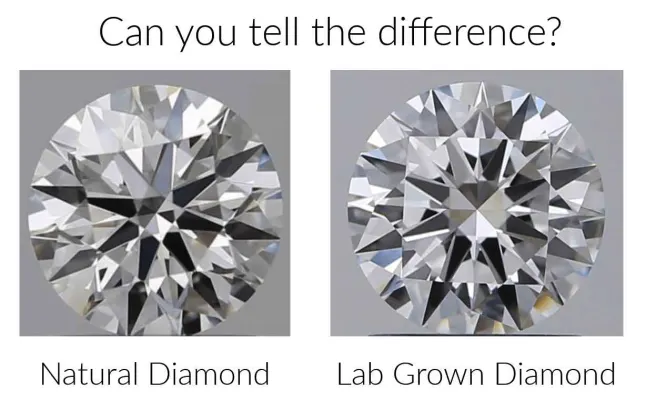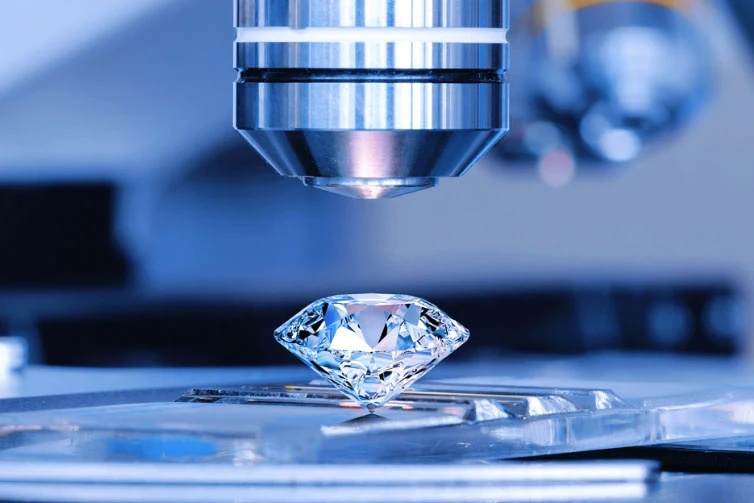Lab Created Diamond vs. Natural Diamonds
Lab-created diamonds have become increasingly popular over the years. Some people may call lab-grown diamonds “fake” or “imitations,” but this is wrong. They are physically and chemically identical to natural diamonds — only more affordable. So what is the difference between the two? If you are in the market for a diamond, you want to be able to make the best decision based on all of the facts with the differences and similarities between the two.
The only difference between lab-created and natural diamonds is one is formed deep beneath the earth while the other was grown in a lab. Lab-created diamonds may exhibit different trace elements than natural diamonds but don’t affect the look of the diamond. The only way to tell the difference between natural and lab-grown diamonds is through specialized equipment tests.
How are Diamonds Made?

Natural diamond found in Mir Pipe, Russia. Photo sourced from iRocks.
A diamond is the hardest, most stable form of pure carbon that naturally occurs. Natural diamonds form when pure carbon undergoes super high temperatures and high pressure over billions of years under the Earth’s crust. The diamond only forms in “stability zones” 80-120 miles beneath the crust and in extremely hot temperatures up to 2,200 degrees Fahrenheit. After eons of volcanic eruptions, the diamonds are brought to the surface immersed in large chunks of rock.
Not all natural diamonds are created equally though. The difference in size, color and clarity is caused by the trace minerals and other conditions that impact the diamond as it grows.
What is a Lab-Created Diamond?

Nadia Diamond Engagement Ring With 0.75 Carat Round Lab Created Diamond; photo sourced from Brilliant Earth
Lab-created diamonds are grown in labs under highly controlled conditions that mimic the Earth’s natural growing environment of high temperature and high pressure. They have the same chemical, crystal, optical and physical compositions and structures as natural diamonds. Lab-created diamonds also have the same fire, scintillation and sparkle as natural ones. Lab-grown diamonds are categorized either as High Pressure High Temperature (HPHT) or Chemical Vapor Deposition (CVD), depending on how they are made.
Lab Created Diamonds vs. Natural Diamonds

Photo sourced from Rare Carat
No two diamonds are alike, whether they are natural or lab-grown. When considering between the two of them, there are no differences to the naked eye. The main difference is their origin. Like natural diamonds, lab-created diamonds can have flaws that affect their clarity and are also graded with a certified clarity grade and the 4C’s by either the Gemological Institute of America (GIA), the American Gem Society (AGS), the International Gemological Institute (IGI), or the European Gemological Laboratory (EGL).
Colors of Lab vs. Natural Diamonds

Photo sourced from Krikawa Custom Jewelers
Lab-grown diamonds can be created in shades of whites, pinks, yellows, blues and greens and are found with color grades D-K. Natural diamonds can come in every color imaginable with an infinite number of hues, saturations and tones. Colored diamonds come from impurities that become trapped inside the diamond as it grows. Different types of trace chemicals cause different colors and different levels of saturation.
How Long Does it Take for a Diamond to “Grow”

Photo sourced from Beldiamond
When comparing natural and lab diamonds, the difference between how much time they spend growing is beguiling. Depending on the size, lab created diamonds take about 6 to 10 weeks to form. Natural diamonds that are mined near the Earth’s crust today formed anywhere from 1 billion to 3.3 billion years ago. This is why they are so valuable.
Another interesting difference between the two is the carat weight ranges. Lab-grown diamonds can grow up to 100 carats while natural diamonds can grow up to 400 carats!
Price Range and Value
Lab-created diamonds cost about 30-50 percent less than natural diamonds that are comparable in size and quality. A very important difference between lab grown and natural diamonds is that lab-grown diamonds have very little resale value. Natural diamonds typically retain their value and can be sold years later.
Sustainability and Ethics
While there are conflict-free natural diamonds, lab-created diamonds are considered more sustainable and ec0-friendly because they don’t require mining. They are also considered conflict free by definition. However, some labs in China or India may mass produce diamonds in poor conditions for the workers. So no matter what type of diamond you are looking for, check for sustainable and conflict-free certification and seals.
When it comes to shopping for a diamond, do what feels right for you. Natural and lab diamonds are chemically the same. No matter what type of diamond you choose, check them out in person and pick one that speaks to you.
you might also like
Check Out The Latest on Instagram
Check Out The Latest on Instagram
Follow us on Facebook and Instagram for more tips, resources, and inspiration!













